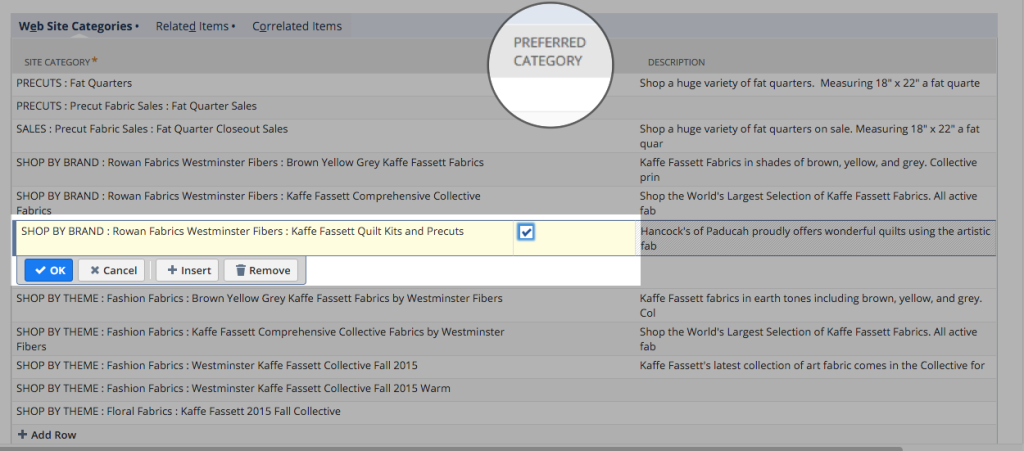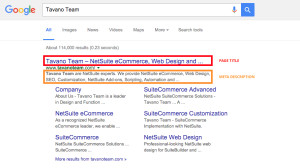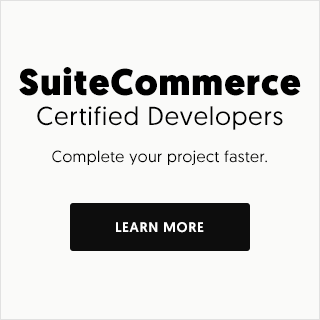So you aren’t an SEO expert? Don’t worry, you don’t need to be one to enhance your website’s search engine optimization. Here are some tips to help you improve your SEO when managing your site with NetSuite’s Site Builder module.
1) Enter a Page Title: A title tag is the main text that describes an online document, and appears in two key places: browsers tabs and search engine results pages (SERP). The Optimal Format for category and product pages is as follows: Primary Keywords – Secondary Keywords | Brand Name. Every page of the website should have a unique page title. If no data is included for this field, then NetSuite will automatically use the name of the tab/category/item record.
2) Add a Meta-Description: The Meta-Description complements the Meta-Title. Ideally, the description must be just that; a description of that specific web page. It’s NOT a general description of your site nor the description of your company history, values, etc… It should describe what the user will find in each and every specific page and should have a maximum of 160 characters.
3) Use URL Component: Enter a short but descriptive name in the URL component field. This is the parameter that will show at the end of the page URL. If you leave this field blank, NetSuite will auto generate the component using your page title.


4) Include Effective Internal Linking: Internal links are most useful for establishing site architecture and spreading link juice. These type of links are useful because not only allows users to navigate a website but they help establish information hierarchy for your website which is very helpful for Google bots.
5) Mark Preferred Categories: Remember to assign a Preferred Category to your items. NetSuite builds a canonical, or normalized, URL based on the preferred category you select for each item published online. A canonical URL is useful in SEO because it creates a single preferred path to each item on your web site, which eliminates the perception of duplicate content. Although an item may display in multiple categories or tabs, NetSuite uses the canonical URL to point to item pages in product feeds and site-maps. If you do not select a preferred category on the item record, NetSuite will determine the preferred category based on the most prominent category or tab on your site where the item is published.

For the case of SuiteCommerce Advanced, where Categories do not exist, URL component at faceted search page is set at the Configuration.js level.
6) Keep Heading Tags: From H1 to H6, HTML heading tag are used to set content hierarchy which a page. When inspecting a website, Google bots, benefit from well-organized content such as the correct used for the Heading tags. There’s no need to get down to an H6 level (typically pages use up to H3). However always make sure that within the website H tags are consistent and do not break (such as jumping from H2 to H4) . You can easily see how your page content is displayed for Google bots by looking typing the following in the browser´s address bar (using your own website URLs, of course): cached: yourURL.com
7) Include Alt-Tags: Including alt tags into your image sources is relevant for SEO and usability as well. HTML provides us with the image alt attribute to describe the image in readable text format. This helps to compensate for these situations where people or bots cannot interpret the image content. So when an image is added to a description field, be sure to include to it an alt attribute.







